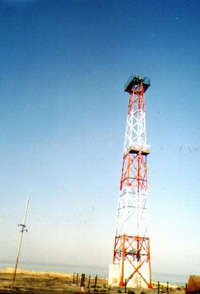INDIA
AHA, een Indiase vestiging van AGA, LINK

Aga depot in Mangalore, acetyleen voor de vuurtorens.

Maar ook zuurstof bleek een belangrijk produkt,
immers je kon lassen met zuurstof ( 4 bar) en acetyleen ( 0,4 bar )
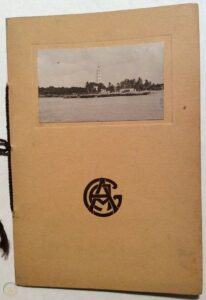
AGA vuurtoren boek uit 1920
1920S BOOK OF AGA LIGHTHOUSE PHOTOGRAPHS, WALES, BAHAMAS, INDIA, BURMA.
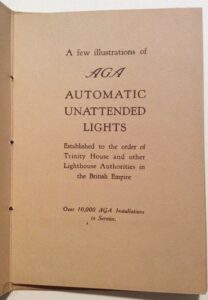
The mail;
G’day
I am writing in relation to some AGA lights thats in my parents collection and hoping to get some info such as model and product information.
I have attached pics for your reference.
I would much appreciate if you can be of assistance of if you could direct me in the right path.
Look forward to hearing from you.
Best Regards
Gopal
4 Photo`s
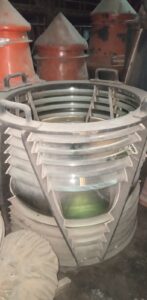
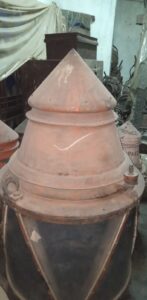
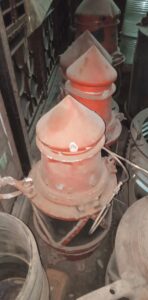
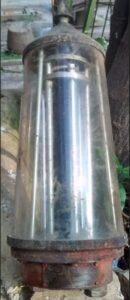
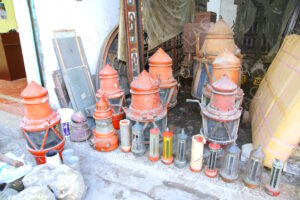
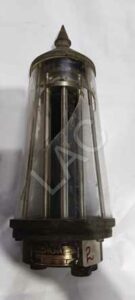
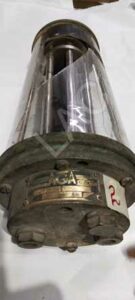
Lighthouse in India BRON
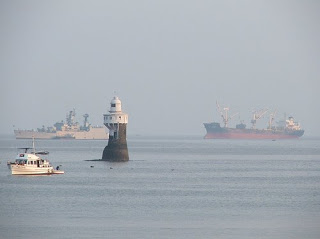
Dolphin Point Lighthouse India
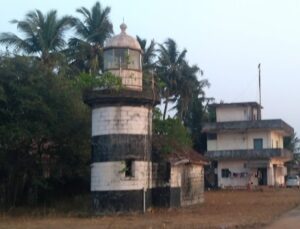
AGA Lighthouse Mangalore LINK
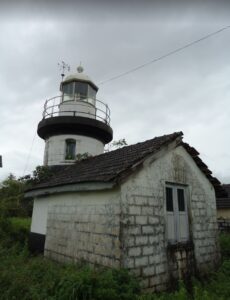
Gegevens van de volgende site;
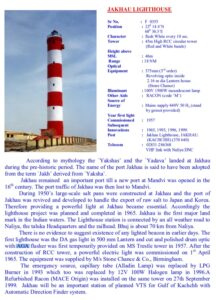 32
32
According to mythology the `Yakshas‟ and the `Yadava‟ landed at Jakhau
during the pre-historic period. The name of the port Jakhau is said to have been adopted
from the term `Jakh‟ derived from `Yaksha‟.
Jakhau remained an important port till a new port at Mandvi was opened in the
16th century. The port traffic of Jakhau was then lost to Mandvi.
During 1950‟s large-scale salt pans were constructed at Jakhau and the port of
Jakhau was revived and developed to handle the export of raw salt to Japan and Korea.
Therefore providing a powerful light at Jakhau became essential. Accordingly the
lighthouse project was planned and completed in 1965. Jakhau is the first major land
mark in the Indian waters. The Lighthouse station is connected by an all weather road to
Naliya, the taluka Headquarters and the railhead. Bhuj is about 70 km from Naliya.
There is no evidence to suggest existence of any lighted beacon in earlier days. The
first lighthouse was the DA gas light in 500 mm Lantern and cut and polished drum optic
with AGA flasher was first temporarily provided on MS Trestle tower in 1957. After the
construction of RCC tower, a powerful electric light was commissioned on 1st April
1965. The equipment was supplied by M/s Stone Chance & Co., Birmingham.
The emergency source, capillary tube (Alladin Lamp) was replaced by LPG
Burner in 1993 which too was replaced by 12V 100W Halogen lamp in 1996.A
Refurbished Racon (MACE Origin) was installed on the same tower on 27th September
1999. Jakhau will be an important station of planned VTS for Gulf of Kachchh with
Automatic Direction Finder system.
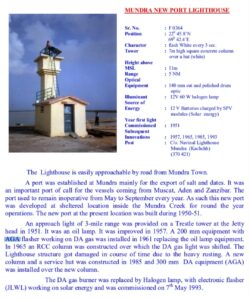 39
39
The Lighthouse is easily approachable by road from Mundra Town.
A port was established at Mundra mainly for the export of salt and dates. It was
an important port of call for the vessels coming from Muscat, Aden and Zanzibar. The
port used to remain inoperative from May to September every year. As such this new port
was developed at sheltered location inside the Mundra Creek for round the year
operations. The new port at the present location was built during 1950-51.
An approach light of 3-mile range was provided on a Trestle tower at the Jetty
head in 1951. It was an oil lamp. It was improved in 1957. A 200 mm equipment with
AGA flasher working on DA gas was installed in 1961 replacing the oil lamp equipment.
In 1965 an RCC column was constructed over which the DA gas light was shifted. The
Lighthouse structure got damaged in course of time due to the heavy rusting. A new
column and a service hut was constructed in 1985 and 300 mm DA equipment (AGA)
was installed over the new column.
The DA gas burner was replaced by Halogen lamp, with electronic flasher
(JLWL) working on solar energy and was commissioned on 7th May 1993.
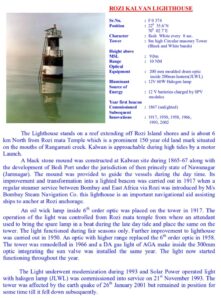 43
43
The Lighthouse stands on a reef extending off Rozi Island shores and is about 6
km North from Rozi mata Temple which is a prominent 150 year old land mark situated
on the mouths of Rangamati creek. Kalwan is approachable during high tides by a motor
Launch.
A black stone mound was constructed at Kalwan site during 1865-67 along with
the development of Bedi Port under the jurisdiction of then princely state of Nawanagar
(Jamnagar). The mound was provided to guide the vessels during the day time. Its
improvement and transformation into a lighted beacon was carried out in 1917 when a
regular steamer service between Bombay and East Africa via Rozi was introduced by M/s
Bombay Steam Navigation Co. this lighthouse is an important navigational aid assisting
ships to anchor at Rozi anchorage.
An oil wick lamp inside 6th order optic was placed on the tower in 1917. The
operation of the light was controlled from Rozi mata temple from where an attendant
used to bring the spare lamp in a boat during the late day tide and place the same on the
tower. The light functioned during fair seasons only. Further improvement to lighthouse
was carried out in 1950. An optic with higher range replaced the 6th order optic in 1958.
The tower was remodelled in 1966 and a DA gas light of AGA make inside the 300mm
optic integrating the sun valve was installed the same year. The light now started
functioning throughout the year.
The Light underwent modernization during 1993 and Solar Power operated light
with halogen lamp (JLWL) was commissioned into service on 21st November 1993. The
tower was affected by the earth quake of 26th January 2001 but remained in position for
some time till it fell down subsequently.
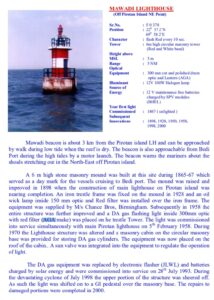 46
46
Mawadi beacon is about 3 km from the Pirotan island LH and can be approached
by walk during low tide when the reef is dry. The beacon is also approachable from Bedi
Port during the high tides by a motor launch. The beacon warns the mariners about the
shoals stretching out in the North-East off Pirotan island.
A 6 m high stone masonry mound was built at this site during 1865-67 which
served as a day mark for the vessels cruising to Bedi port. The mound was raised and
improved in 1898 when the construction of main lighthouse on Pirotan island was
nearing completion. An iron trestle frame was fixed on the mound in 1928 and an oil
wick lamp inside 150 mm optic and Red filter was installed over the iron frame. The
equipment was supplied by M/s Chance Bros, Birmingham. Subsequently in 1958 the
entire structure was further improved and a DA gas flashing light inside 300mm optic
with red filter (AGA make) was placed on he trestle Tower. The light was commissioned
into service simultaneously with main Pirotan lighthouse on 5th February 1958. During
1970 the Lighthouse structure was altered and a masonry cabin on the circular masonry
base was provided for storing DA gas cylinders. The equipment was now placed on the
roof of the cabin.. A sun valve was integrated into the equipment to regulate the operation
of light.
The DA gas equipment was replaced by electronic flasher (JLWL) and batteries
charged by solar energy and were commissioned into service on 28th July 1993. During
the devastating cyclone of July 1998 the upper portion of the structure was sheered off.
As such the light was shifted on to a GI ped
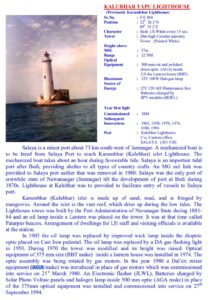 49
49
Salaya is a minor port about 73 km south-west of Jamnagar. A mechanized boat is
to be hired from Salaya Port to reach Karumbhar (Kalubhar) islet Lighthouse. The
mechanized boat takes about an hour during favourable tide. Salaya is an important tidal
port after Bedi, providing shelter to all types of country crafts. An MG rail link was
provided to Salaya port earlier that was removed in 1980. Salaya was the only port of
erstwhile state of Nawanaagar (Jamnagar) till the development of port at Bedi during
1870s. Lighthouse at Kalubhar was to provided to facilitate entry of vessels to Salaya
port.
Karumbhar (Kalubhar) islet is made up of sand, mud, and is fringed by
mangroves. Around the islet is the vast reef, which dries up during the low tides. The
Lighthouse tower was built by the Port Administration of Navanagar State during 1881-
84 and an oil lamp inside a Lantern was placed on the tower. It was at that time called
Patarpur beacon. Arrangement of dwellings for LH staff and visiting officials is available
at the station.
In 1903 the oil lamp was replaced by improved wick lamp inside the dioptric
optic placed on Cast Iron pedestal. The oil lamp was replaced by a DA gas flashing light
in 1950. During 1970 the tower was modified and its height was raised. Optical
equipment of 375 mm size (BBT make) inside a lantern house was installed in 1974. The
optic assembly was being rotated by gas motors. In the year 1980 a Dal‟en mixer
equipment (AGA make) was introduced in place of gas motors which was commissioned
into service on 21st March 1980. An Electronic flasher (JLWL), Batteries charged by
Solar Photo Voltaic panels and halogen lamp inside 500 mm optic (AGA make) in place
of the 375mm optical equipment was installed and commissioned into service on 27th
September 1994.
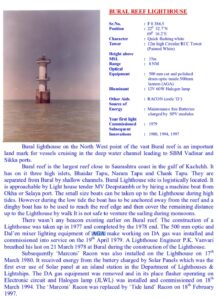 51
51
Bural lighthouse on the North West point of the vast Bural reef is an important
land mark for vessels cruising in the deep water channel leading to SBM Vadinar and
Sikka ports.
Bural reef is the largest reef close to Saurashtra coast in the gulf of Kachchh. It
has on it three high islets, Bhaidar Tapu, Narara Tapu and Chank Tapu. They are
separated from Bural by shallow channels. Bural Lighthouse site is logistically located. It
is approachable by Light house tender MV Deepstambh or by hiring a machine boat from
Okha or Salaya port. The small size boats can be taken up to the Lighthouse during high
tides. However during the low tide the boat has to be anchored away from the reef and a
dinghy boat has to be used to reach the reef edge and then cover the remaining distance
up to the Lighthouse by walk It is not safe to venture the sailing during monsoons.
There wasn‟t any beacon existing earlier on Bural reef. The construction of a
Lighthouse was taken up in 1977 and completed by the 1978 end. The 500 mm optic and
Dal‟en mixer lighting equipment of AGA make working on DA gas was installed and
commissioned into service on the 19th April 1979. A Lighthouse Engineer P.K. Vanvari
breathed his last on 21 March 1978 at Bural during the construction of the Lighthouse.
Subsequently „Marconi‟ Racon was also installed on the Lighthouse on 17th
March 1980. It received energy from the battery charged by Solar Panels which was the
first ever use of Solar panel at an island station in the Department of Lighthouses &
Lightships. The DA gas equipment was removed and in its place flasher operating on
Electronic circuit and Halogen lamp (JLWL) was installed and commissioned on 18th
March 1994. The „Marconi‟ Racon was replaced by „Tide land‟ Racon on 18th February
1997.
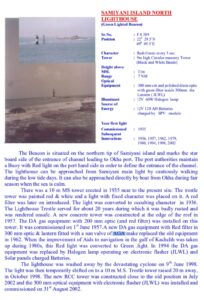 55
55
The Beacon is situated on the northern tip of Samiyani island and marks the star
board side of the entrance of channel leading to Okha port. The port authorities maintain
a Buoy with Red light on the port hand side in order to define the entrance of the channel.
The lighthouse can be approached from Samiyani main light by cautiously walking
during the low tide days. It can also be approached directly by boat from Okha during fair
season when the sea is calm.
There was a 10 m MS tower erected in 1935 near to the present site. The trestle
tower was painted red & white and a light with fixed character was placed on it. A red
filter was later on introduced. The light was converted to occulting character in 1936.
The Lighthouse Trestle served for about 20 years during which it was badly rusted and
was rendered unsafe. A new concrete tower was constructed at the edge of the reef in
1957. The DA gas equipment with 200 mm optic (and red filter) was installed on this
tower. It was commissioned on 1st June 1957.A new DA gas equipment with Red filter in
300 mm optic & lantern fitted with a sun valve of AGA make replaced the old equipment
in 1962. When the improvement of Aids to navigation in the gulf of Kachchh was taken
up during 1980s, this Red light was converted to Green .light. In 1994 the DA gas
equipment was replaced by Halogen lamp operating on electronic flasher (JLWL) and
Solar panels charged Batteries.
The lighthouse was washed away by the devastating cyclone on 9th June 1998.
The light was then temporarily shifted on to a 10 m M.S. Trestle tower raised 20 m away,
in October 1998. The new RCC tower was constructed close to the old position in July
2002 and the 300 mm optical equipment with electronic flasher (JLWL) was installed and
commissioned on 31st August 2002.
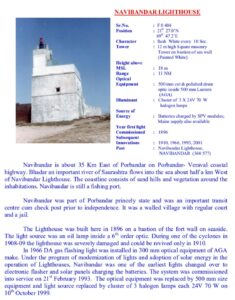 63
63
Navibandar is about 35 Km East of Porbandar on Porbandar- Veraval coastal
highway. Bhadar an important river of Saurashtra flows into the sea about half a km West
of Navibandar Lighthouse. The coastline consists of sand hills and vegetation around the
inhabitations. Navibandar is still a fishing port.
Navibandar was part of Porbandar princely state and was an important transit
centre cum check post prior to independence. It was a walled village with regular court
and a jail.
The Lighthouse was built here in 1896 on a bastion of the fort wall on seaside.
The light source was an oil lamp inside a 6th order optic. During one of the cyclones in
1908-09 the lighthouse was severely damaged and could be revived only in 1910.
In 1966 DA gas flashing light was installed in 300 mm optical equipment of AGA
make. Under the program of modernization of lights and adoption of solar energy in the
operation of Lighthouses, Navibandar was one of the earliest lights changed over to
electronic flasher and solar panels charging the batteries. The system was commissioned
into service on 21st February 1993. The optical equipment was replaced by 500 mm size
equipment and light source replaced by cluster of 3 halogen lamps each 24V 70 W on
10th October 1999.
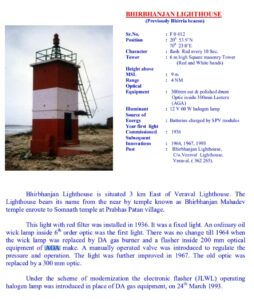 67
67
Bhirbhanjan Lighthouse is situated 3 km East of Veraval Lighthouse. The
Lighthouse bears its name from the near by temple known as Bhirbhanjan Mahadev
temple enroute to Somnath temple at Prabhas Patan village.
This light with red filter was installed in 1936. It was a fixed light. An ordinary oil
wick lamp inside 6th order optic was the first light. There was no change till 1964 when
the wick lamp was replaced by DA gas burner and a flasher inside 200 mm optical
equipment of AGA make. A manually operated valve was introduced to regulate the
pressure and operation. The light was further improved in 1967. The old optic was
replaced by a 300 mm optic.
Under the scheme of modernization the electronic flasher (JLWL) operating
halogen lamp was introduced in place of DA gas equipment, on 24th March 1993.
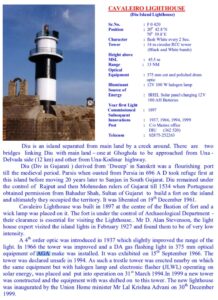 70
70
Diu is an island separated from main land by a creek around. There are two
bridges linking Diu with main land – one at Ghoghola to be approached from Una –
Delvada side (12 km) and other from Una-Kodinar highway.
Diu (Div in Gujarati ) derived from „Dweep‟ in Sanskrit was a flourishing port
till the medieval period. Parsis when ousted from Persia in 696 A D took refuge first at
this island before moving 20 years later to Sanjan in South Gujarat. Diu remained under
the control of Rajput and then Mohmedan rulers of Gujarat till 1534 when Portuguese
obtained permission from Bahadur Shah, Sultan of Gujarat to build a fort on the island
and ultimately they occupied the territory. It was liberated on 19th December 1961.
Cavaleiro Lighthouse was built in 1897 at the centre of the Bastion of fort and a
wick lamp was placed on it. The fort is under the control of Archaeological Department –
their clearance is essential for visiting the Lighthouse.. Mr D. Alan Stevenson, the light
house expert visited the island lights in February 1927 and found them to be of very low
intensity.
A 4th order optic was introduced in 1937 which slightly improved the range of the
light. In 1966 the tower was improved and a DA gas flashing light in 375 mm optical
equipment of AGA make was installed. It was exhibited on 15th September 1966. The
tower was declared unsafe in 1994. As such a trestle tower was erected nearby on which
the same equipment but with halogen lamp and electronic flasher (JLWL) operating on
solar energy, was placed and put into operation on 31st March 1994.In 1999 a new tower
was constructed and the equipment with was shifted on to this tower. The new lighthouse
was inaugurated by the Union Home minister Mr Lal Krishna Advani on 30 th December 1999.
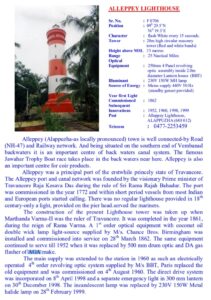 132
132
Alleppey (Alappuzha-as locally pronounced) town is well connected-by Road
(NH-47) and Railway network. And being situated on the southern end of Vembanad
backwaters it is an important centre of back waters canal system. The famous
Jawahar Trophy Boat race takes place in the back waters near here. Alleppey is also
an important centre for coir products.
Alleppey was a principal port of the erstwhile princely state of Travancore.
The Alleppey port and canal network was founded by the visionary Prime minister of
Travancore Raja Kesava Das during the rule of Sri Rama Rajah Bahadur. The port
was commissioned in the year 1772 and within short period vessels from most Indian
and European ports started calling. There was no regular lighthouse provided in 18th
century-only a light, provided on the pier head.served the mariners.
The construction of the present Lighthouse tower was taken up when
Marthanda Varma-II was the ruler of Travancore. It was completed in the year 1861,
during the reign of Rama Varma. A 1st order optical equipment with coconut oil
double wick lamp light-source supplied by M/s. Chance Bros. Birmingham was
installed and commissioned into service on 28th March 1862. The same equipment
continued to serve till 1952 when it was replaced by 500 mm drum optic and DA gas
flasher of AGA make.
The main supply was extended to the station in 1960 as such an electrically
operated 4th order revolving optic system supplied by M/s BBT, Paris replaced the
old equipment and was commissioned on 4th August 1960. The direct drive system
was incorporated on 8th April 1998 and a separate emergency light in 300 mm lantern
on 30th December 1998. The incandescent lamp was replaced by 230V 150W Metal
halide lamp on 28th February 1999.
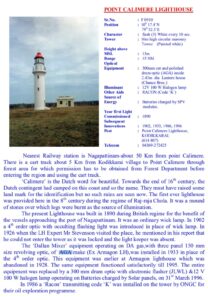 162
162
Nearest Railway station is Nagapattinam-about 50 Km from point Calimere.
There is a cart track about 5 Km from Kodikkarai village to Point Calimere through
forest area for which permission has to be obtained from Forest Department before
entering the region and using the cart track.
„Calimere‟ is the Dutch word for beautiful. Towards the end of 16th century, the
Dutch contingent had camped on this coast and so the name. They must have raised some
land mark for the identification but no such ruins are seen now. The first ever lighthouse
was provided here in the 8th century during the regime of Raj-raja Chola. It was a mound
of stones over which logs were burnt as the source of illumination.
The present Lighthouse was built in 1890 during British regime for the benefit of
the vessels approaching the port of Nagapattinam. It was an ordinary wick lamp. In 1902
a 4th order optic with occulting flashing light was introduced in place of wick lamp. In
1926 when the LH Expert Mr Stevenson visited the place, he mentioned in his report that
he could not enter the tower as it was locked and the light keeper was absent.
The „Dallan Mixer‟ equipment operating on DA gas,with three panel 150 mm
size revolving optic, of AGA make (Ex Armagon LH),was installed in 1933 in place of
the 4th order optic. This equipment was earlier at Armagon lighthouse which was
abandoned in 1928. The same equipment functioned satisfactorily till 1995. The entire
equipment was replaced by a 300 mm drum optic with electronic flasher (JLWL) &12 V
100 W halogen lamp operating on Batteries charged by Solar panels, on 31st March 1996.
In 1986 a „Racon‟ transmitting code „K‟ was installed on the tower by ONGC for
their oil exploration programme.
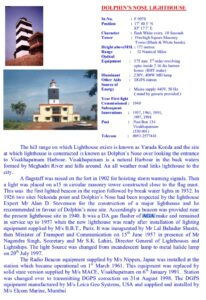 183
183
The hill range on which Lighthouse exists is known as Yarada Konda and the site
at which lighthouse is constructed is known as Dolphin‟s Nose over looking the entrance
to Visakhapatnam Harbour. Visakhapatnam is a natural Harbour in the back waters
formed by Meghadri River and hills around. An all weather road links lighthouse to the
city.
A flagstaff was raised on the fort in 1902 for hoisting storm warning signals. Then
a light was placed on a15 m circular masonry tower constructed close to the flag mast.
This was the first lighted beacon in the region followed by break water lights in 1932. In
1926 two sites Nekonda point and Dolphin‟s Nose had been inspected by the lighthouse
Expert Mr Alan D. Stevenson for the construction of a major lighthouse and he
recommended in favour of Dolphin‟s nose site. Accordingly a beacon was provided near
the present lighthouse site in 1940. It was a DA gas flasher of AGA make and remained
in service up to 1957 when the new lighthouse was ready after installation of lighting
equipment supplied by M/s B.B.T., Paris. It was inaugurated by Mr Lal Bahadur Shastri,
then Minister of Transport and Communication on 15th June 1957 in presence of Mr
Nagendra Singh, Secretary and Mr S.K. Lahiri, Director General of Lighthouses and
Lightships. The light Source was changed from incandescent lamp to metal halide lamp
on 20th July 1997.
The Radio Beacon equipment supplied by M/s Nippon, Japan was installed at the
station which became operational on 1st March 1961. This equipment was replaced by
solid state version supplied by M/s MACE, Visakhapatnam on 6th January 1991. Station
was changed over to transmitting DGPS correction on 31st August 1998. The DGPS
equipment manufactured by M/s Leica Geo Systems, USA and supplied and installed by
M/s Elcom Marine, Mumbai
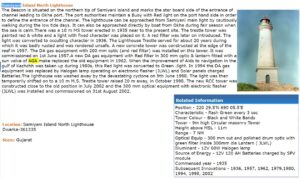
Samiyani Island North Lighthouse |
The Beacon is situated on the northern tip of Samiyani island and marks the star board side of the entrance of channel leading to Okha port. The port authorities maintain a Buoy with Red light on the port hand side in order to define the entrance of the channel. The lighthouse can be approached from Samiyani main light by cautiously walking during the low tide days. It can also be approached directly by boat from Okha during fair season when the sea is calm.There was a 10 m MS tower erected in 1935 near to the present site. The trestle tower was painted red & white and a light with fixed character was placed on it. A red filter was later on introduced. The light was converted to occulting character in 1936. The Lighthouse Trestle served for about 20 years during which it was badly rusted and was rendered unsafe. A new concrete tower was constructed at the edge of the reef in 1957. The DA gas equipment with 200 mm optic (and red filter) was installed on this tower. It was commissioned on 1st June 1957.A new DA gas equipment with Red filter in 300 mm optic & lantern fitted with a sun valve of AGA make replaced the old equipment in 1962. When the improvement of Aids to navigation in the gulf of Kachchh was taken up during 1980s, this Red light was converted to Green .light. In 1994 the DA gas equipment was replaced by Halogen lamp operating on electronic flasher (JLWL) and Solar panels charged Batteries.The lighthouse was washed away by the devastating cyclone on 9th June 1998. The light was then temporarily shifted on to a 10 m M.S. Trestle tower raised 20 m away, in October 1998. The new RCC tower was constructed close to the old position in July 2002 and the 300 mm optical equipment with electronic flasher (JLWL) was installed and commissioned on 31st August 2002. |
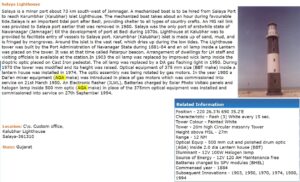
Salaya Lighthouse |
Salaya is a minor port about 73 km south-west of Jamnagar. A mechanized boat is to be hired from Salaya Port to reach Karumbhar (Kalubhar) islet Lighthouse. The mechanized boat takes about an hour during favourable tide.Salaya is an important tidal port after Bedi, providing shelter to all types of country crafts. An MG rail link was provided to Salaya port earlier that was removed in 1980. Salaya was the only port of erstwhile state of Nawanaagar (Jamnagar) till the development of port at Bedi during 1870s. Lighthouse at Kalubhar was to provided to facilitate entry of vessels to Salaya port. Karumbhar (Kalubhar) islet is made up of sand, mud, and is fringed by mangroves. Around the islet is the vast reef, which dries up during the low tides. The Lighthouse tower was built by the Port Administration of Navanagar State during 1881-84 and an oil lamp inside a Lantern was placed on the tower. It was at that time called Patarpur beacon. Arrangement of dwellings for LH staff and visiting officials is available at the station.In 1903 the oil lamp was replaced by improved wick lamp inside the dioptric optic placed on Cast Iron pedestal. The oil lamp was replaced by a DA gas flashing light in 1950. During 1970 the tower was modified and its height was raised. Optical equipment of 375 mm size (BBT make) inside a lantern house was installed in 1974. The optic assembly was being rotated by gas motors. In the year 1980 a Dal’en mixer equipment (AGA make) was introduced in place of gas motors which was commissioned into service on 21st March 1980. An Electronic flasher (JLWL), Batteries charged by Solar Photo Voltaic panels and halogen lamp inside 500 mm optic (AGA make) in place of the 375mm optical equipment was installed and commissioned into service on 27th September 1994. |
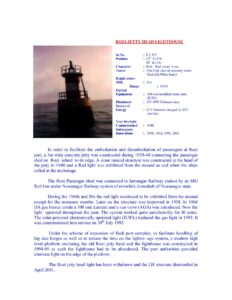
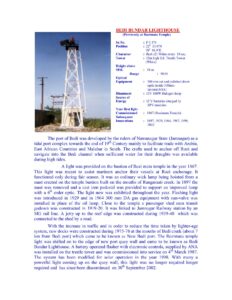
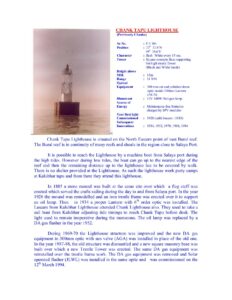
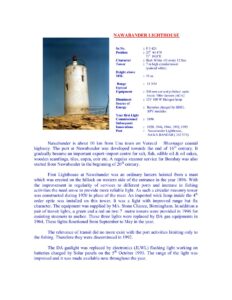
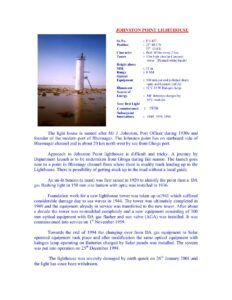
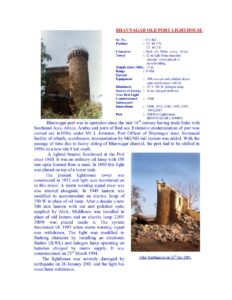
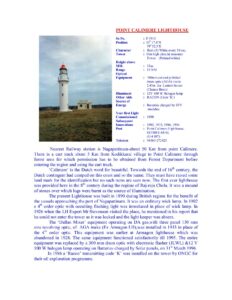
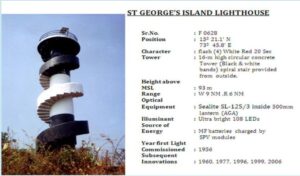
ST George`s island lighthouse
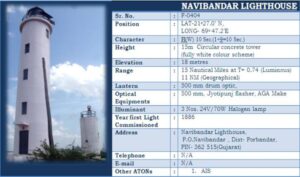
Navibandar lighthouse
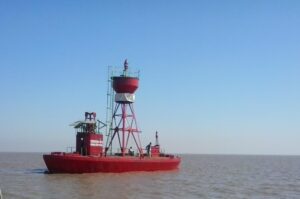
A light vessel or lightship is a ship which acts as a lighthouse. They are placed in shallow waters where depth of the water keeps changing according to tides or at locations unsuitable for lighthouse construction. Presently the Directorate is maintaining a Perigee lightship at the shallow water off the Bhavnagar coast in Gujarat .
vanaf 11-05-2013
